Will we find life in a lake trapped under 3 kilometres of ice? How can living above an abandoned mine cut your heating bills? What is the future for diet foods? This week, we bring you the best from the British Science Festival in Aberdeen. We also discuss the Higgs and antimatter, how plastics are affecting our health and how to recreate the colours of fossilised insects...
In this episode

- Stretching Time and Sensing Food
Stretching Time and Sensing Food
with Nobuhiro Hagura, UCL; Stewart Cole, Ecole Polytechnique de Federale; Dominick Spracklen, University of Leeds; Emmanuelle Jaquin-Joly, INRA
Take your Time
 The idea that time slows down for athletes as they prepare for actions during a sport, such as hitting a ball, may hold some truth.
The idea that time slows down for athletes as they prepare for actions during a sport, such as hitting a ball, may hold some truth.
By testing the reactions of volunteers to lights flashing on a screen, Nobuhiro Hagura form University College London found that when tests involved a physical movement to tap the screen, individuals felt they had more time to react than when no movement was needed at all.
The results published in the Proceedings of the Royal Society B suggest this slowing down of time could be due to more visual information coming in through the eyes as someone prepares to move.
---
Regional Rain
Deforestation could cause a reduction in rainfall by up to 21% in regions surrounding the Amazon basin, according to work published in Nature.
When forests are cleared to provide land for crops or pastures, the water returned into the atmosphere by evaporation and transpiration is decreased, leading to lower humidity and rainfall in surroundings areas as air passes over the region.
Using satellite data of tropical rainfall and atmospheric models, Dominick Spracklen from the University of Leeds found that air passing over a rainforest region produces at least twice as much rainfall in the following days than air passing over more scarce vegetation. Continued deforestation in these areas could have large effect on local economies.
---
Dimensional Drugs
3D imaging has identified the potency and mechanisms of a new drug to fight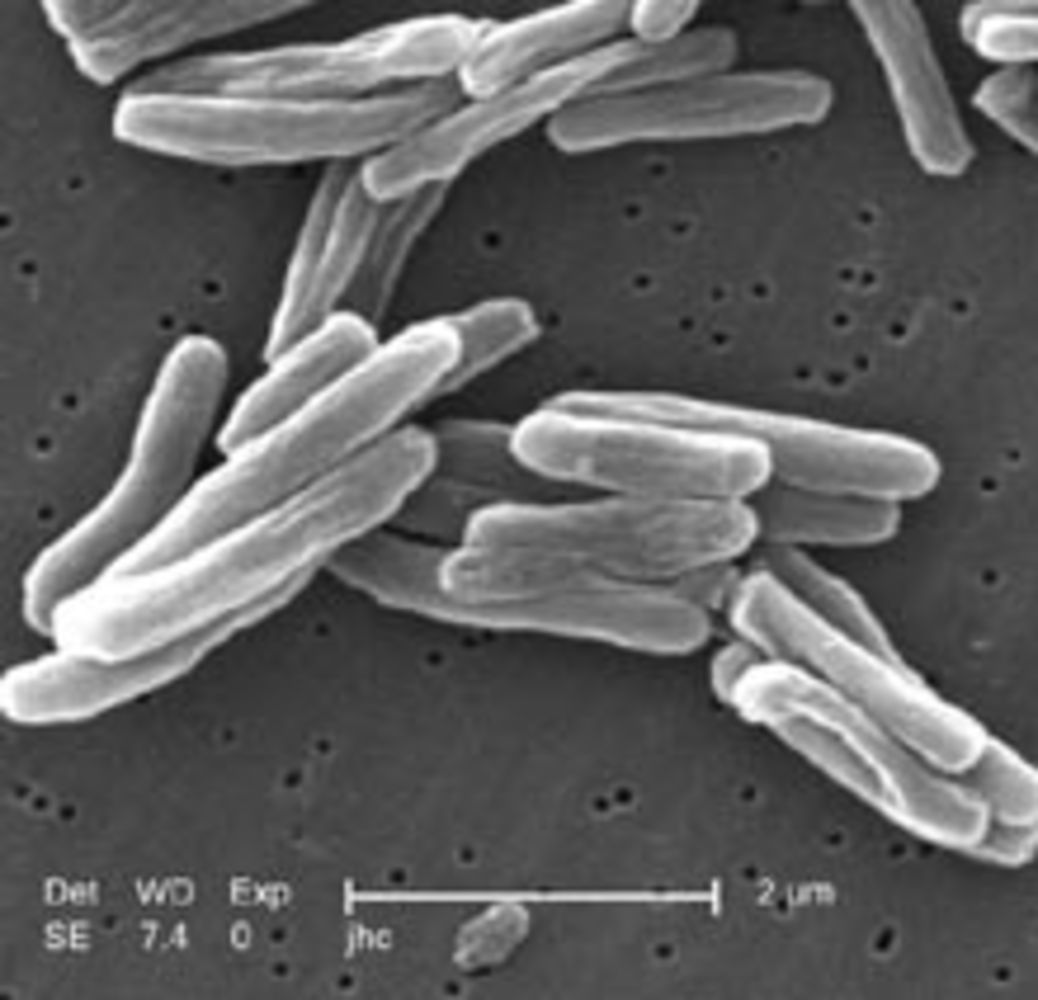 Tuberculosis.
Tuberculosis.
Publishing in Science Translational Medicine, Stewart Cole and colleagues from the Ecole Polytechnique de Federale in Lausanne used X-ray crystallography to create a 3D model of the benzothiazinone drug BTZ043 and its interaction with an enzyme crucial to the production of the cell wall in Mycobacterium tuberculosis - the bacterium behind the disease.
The team identified the presence of a 'weakspot' in the enzyme which the drug targets to inhibit enzyme activity and kill the bacterium, revealing the potency of this potential drug candidate.
Sniffing out Food
Sex pheromones release by adult moths to attract a mate, also attract a hungry caterpillar, as revealed by researchers at INRA in Versailles.
Working with larvae of cotton leafworms and feeding them with plain food or food mixed with pheromones , Emmanuelle Jacquin-Joly found that the caterpillars were attracted to meals laced with female pheromone regardless of their own gender and their sexual immaturity.
The use of pheromones to find food could be a way to ensure suitable plants as food sources for the growing insect and offers potential for the pheromones to be used in pest control.
And that work was published in the journal Nature Communications.
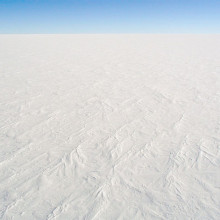
01:24 - What lies beneath the Antarctic ice?
What lies beneath the Antarctic ice?
with Chris Hill, British Antarctic Survey
Chris - First, an expedition to tap into a lake buried 3 kilometres beneath the Antarctic ice sheet kicks off next month, after 16 years of planning. Scientists will be looking for the chemical hallmarks of life, as well as bacteria and other microbes in the lake water, which has been cut off from the outside world for tens of thousands, if not millions of years. Chris Hill from the British Antarctic Survey in Cambridge has the unenviable task of being in-charge of the operation and actually drilling into the lake. So what is this lake known as Lake Ellsworth and what are the conditions like there?
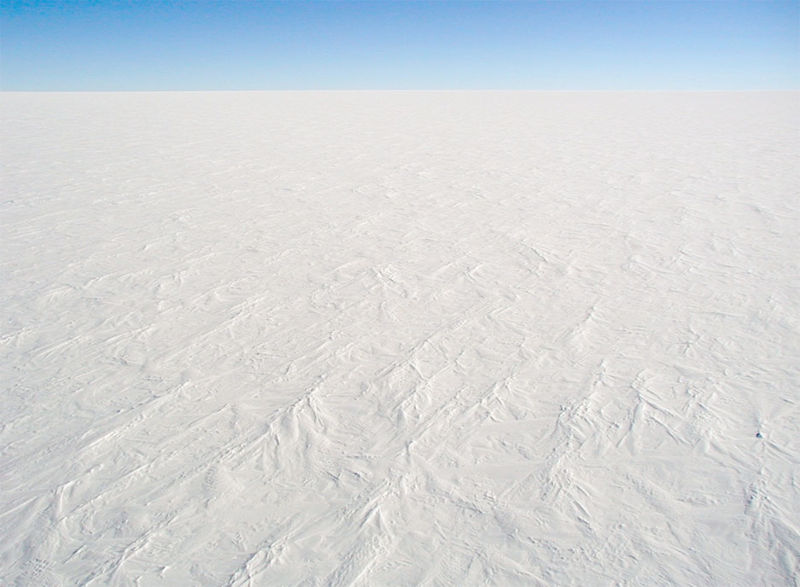 Chris H. - Lake Ellsworth is a liquid body of water underneath approximately 3.2 kilometres of ice sheet. It's a fairly sizeable lake. It's probably about the size of Lake Windermere and it's been cut off for, as you say, many 10s or possibly hundreds of thousands of years from our biosphere. The basic premise is that where there's water there's life, we see that all over our planet, and there's a very special relationship between water and life. But because of the extreme conditions of Lake Ellsworth, the dark, the high pressure, the apparent lack of energy transfer, we really wonder what that life might look like. It's a fascinating exploration to find something new.
Chris H. - Lake Ellsworth is a liquid body of water underneath approximately 3.2 kilometres of ice sheet. It's a fairly sizeable lake. It's probably about the size of Lake Windermere and it's been cut off for, as you say, many 10s or possibly hundreds of thousands of years from our biosphere. The basic premise is that where there's water there's life, we see that all over our planet, and there's a very special relationship between water and life. But because of the extreme conditions of Lake Ellsworth, the dark, the high pressure, the apparent lack of energy transfer, we really wonder what that life might look like. It's a fascinating exploration to find something new.
Chris - What keeps it as water under all the ice?
Chris H. - Well, that's a very good question and it's actually quite an easy answer. The Earth is relatively quite a hot body. There's a lot of geothermal heating effects underneath the Earth and ice, for all it's cold, is actually quite a good insulator. So if you get a thick enough layer of ice over a hot body, it's inevitable that you're going to get pockets of water.
Chris - And we think that water has been there for a very long time.
Chris H. - Again, it's quite difficult to say until we can actually access the lake and get a sediment core to find out when that ice sheet last collapsed, but the hypothesis is, it's many hundreds of thousands of years, possibly as many as a million.
Chris - Wow! That's quite some time, isn't it? What about on the surface? What are the conditions that you've got to work in like? What's it like up there?
Chris H. - It's not pleasant. We're on the top of a very open ice plateau. It's very cold, so even in the middle of summer, we were looking at temperatures of minus 25 degrees Celsius with average wind speeds of 25 knots. So, it's not pleasant. There's no shelter, there's nothing anywhere near us for about 200 kilometres, there's no mountains. So, we really are exposed, we have to take everything in. There's nothing there already, so we have to take all our equipment in, all our living accommodation and everything with us. We'll be living in tents. We'll be wearing probably the thickest clothing you've ever seen.
Chris - Michelin Man positive.
Chris H. - Completely.
Chris - So, how will you access the water in the lake because it's under 3 kilometres of ice? It's a long way down.
Chris H. - That's right. There's many ways we could do this. There's a lot of techniques for drilling into ice and scientists have been doing this for many years. But by far, the cleanest and quickest is hot water drilling. Essentially, it's the same as a jet wash that you might use on your car. We're going to take some water from the melted snow, the ice on the surface and we're going to heat it, we're going to clean it, and we're going to pump it up to a very high pressure and push it through a very long hose. It's a very quick, efficient, and very clean way of drilling.
Chris - So, this will start at the surface and slowly melt its way down towards the lake.
Chris H. - Exactly and not so slowly actually. At 3.2 kilometres, we will probably get through from the surface to the lake in about 60 hours or 2 ½ days.
Chris - Really? And you've got a 3-kilometre long hose pipe.
Chris H. - We've 3 ½ kilometres and that's another interesting thing actually because the number of engineering challenges we faced to get this far are huge. Even simple things, like you wouldn't think it will be difficult to get a 3 ½-kilometre hose made. It actually is. We only found 2 companies in the world that could produce a hose to our specification. So, I mean, just the hose itself, just a simple piece of tubing was a real phenomenal engineering achievement.
Chris - So, the hot water goes down a hose, this melts the ice in front of it. How do you stop introducing the very molecules that you're going to go hunting for into the lake by dissolving them out of the ice and pushing them with this very high temperature?
Chris H. - Yeah, so that's quite a good question. The preservation of the lake has been paramount in our minds right from day 1. For two reasons, one obviously, we have an environmental responsibility to keep the lake pristine, but probably more selfishly, we actually want to preserve our samples. We don't want to be measuring anything that we've put into the lake accidentally. So, it's two-fold. Firstly, the water we're using to drill is taken from the background ice. So, there's nothing that we're going to use that wouldn't come into the contact of the lake at some point anyway. But more than that, the drill has been designed so that as we fire hot water out of the nozzle, the actual melted ice that's in the way will actually flush back up the borehole to the surface, keeping it away from the lake. So, the only water that will actually reach the lake in the end is the water that's already gone through our filtration system, has been pumped down at high pressure.
Chris - So you're filtering all the water that you're using for the melting.
Chris H. - Absolutely. Every stage of this program has a cleaning protocol and for the water, we filter to beyond pharmaceutical levels.
Chris - So that means screening up bugs and things like that.
Chris H. - Completely.
Chris - So, how will you know when you've actually got through the last bit of slush and you're now in the lake?
Chris H. - There's two ways. We'll know when we're close because the radio-echo sound and seismic data has given us a really accurate distance to the surface of the lake, and we obviously will know how much hose we've paid out and we will know the stretch of our hose. So we'll know when we're within a few meters. But then what we have is a suite of pressure sensors that will allow us to monitor the change in water levels at the top of the borehole. So, we anticipate and as we breakthrough to the lake, we won't fully have accurately equalised the pressure of the lake. So, as soon as we do breakthrough, there'll be a pressure change in the borehole, and we'll be able to sense that, and that will give us the indication beneath the lake.
Chris - Like the Coke bottle that when you take the top off and it fizzes up a bit, you'll see a little pressure change.
Chris H. - Yeah, definitely. We'll see a pressure change and we should be able to measure that, and that will be accurate indication of breaking through.
Chris - And then you'll drop in some probes to measure things in the lake.
Chris H. - That's exactly right. So, when we finish drilling, we need to recover the drill hose because we can't put two things down the borehole at the same time. So we recover the drill hose and then because we're not using any anti-freeze to keep the hole open, we have just 24 hours to deploy 2 instruments. The first instrument is a sampling probe which will take water samples and will also flush through some of the filtrate, the background filtrate in the lake and we'll take a small amount of mud from the bottom of the lake. We then recover that and we deploy a sediment core which we hope to get a 3-metre core sediment from the base of the lake which could give us a really good time record of what's happened in the West Antarctic ice sheet in years gone by.
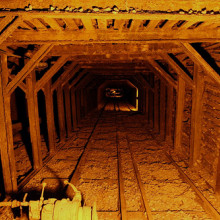
07:58 - How can old mines heat our cities?
How can old mines heat our cities?
with Diarmid Campbell, British Geological Survey
Ben - British Geological Survey Scientists have come up with a strategy using heat pumps to extract warmth from the water deep within flooded mineshafts to supply homes, returning about 4 kilowatts of heating for every 1 kilowatt of energy consumed just to run the system. From Edinburgh, Diarmid Campbell.
Diarmid - The idea is that we use heat pump technology to exploit the resource which lies under a city and we've been using Glasgow as a test case. We've been using Glasgow mainly because we've been doing a lot of work there in the last few years, developing high-resolution 3D models of the subsurface of Glasgow. We've acquired a very good understanding of the extent of the abandoned mine workings which underlie very large parts of the city of Glasgow and the wider Glasgow conurbation.
Chris - How much of Glasgow is sitting on a mineshaft?
Diarmid - Well, looking at the Glasgow conurbation as a whole, it's approximately 50%.
Chris - It's a lot.
Diarmid - In fact, most of the eastern conurbation of Glasgow is sitting on top of mine workings.
Chris - How deep?
Diarmid - They vary up to a maximum depth of about 610 metres, but on average, they're generally in the range of 250 to 300 metres deep as a maximum, but some of the mine workings are very shallow. Some of the oldest mine workings come to surface.
Chris - Are they still intact or have they all collapsed?
Diarmid - Various mining techniques were used and there have been various collapses of some of the very near surface workings which are the oldest workings. But by and large, as the mines developed, they started to use a technique called longwall mining which actually allowed the workings to collapse immediately after the coal had been extracted. So, most of the collapse in subsidence took place a long time ago when the mines were actually active and working.
Chris - So, what we've got underground will be layers of rock which is intact and therefore, very strong and impervious, and it'll be punctuated by this sort of lateral shafts where even if collapses happen, there's lots of debris, things can flow through there.
Diarmid - Yes and the idea of flowing is the key principle in all of this because once the mine had stopped operating, pumps were turned off, then the actual groundwater system was allowed to reinvade the rocks. So essentially, the abandoned mine workings are now flooded and the important thing is, that it's an important aquifer - contains a lot of water and that water flows very readily through the mine workings and through the tunnels which interconnect the mine workings to the shafts. That's the important factor that we can exploit in using ground-source heat pump technology.
Chris - So, you could put a tube or a borehole down to some of these lateral shafts that are full of water at ambient temperature.
Diarmid - Yes.
Chris - Will this therefore exploit the fact that some bits of the mine are going to be at a different temperature than others and you're using that temperature gradient?
Diarmid - Very much so. Now the idea here is not entirely new. There are working systems usually on a small scale and in fact, there's an example in Glasgow which has been operating now for 13 years, providing space heating for some 16, 17 houses in a housing association project. It was a very innovative piece of thinking by the architect who developed the project. And the deeper essentially you drill into the workings, the warmer the water is likely to get. And you can then pump that water to surface, extract some of the heat using heat exchange - it's essentially the technology we have in our fridges - and then return slightly cooler water to a shallower level in the mine workings.
Chris - So, you pull out some of the warmer water and extract the heat from it using the heat pump technology and then return the colder water to a different part of the mine.
Diarmid - Yes and a shallower part of the mine typically and this is what is being done in the largest current working example of such a system in the southern Netherlands. It's a demonstrative project which came on stream in 2008. It had some support from the European Union to raise funds to get the project up and running, but developers buy the heat technology from a company that was setup by the local authority there.
Chris - Is there any risk though, with doing this because you're putting water, albeit a tiny amount cooler in one part of the mine, having taken the energy out? This could potentially affect the pressure, could it not? Or the effect on the rock, it could make the rock contract or expand differentially across the mine workings. Is that not a risk?
Diarmid - I don't think pressure is the real issue at stake because the sorts of volumes of water that we're moving around the systems would be tens of litres a second potentially. So, we're not moving colossal amounts of water around the system, but certainly, the change in temperature of the rock mass is something that we have to take account of, especially in relation to some of the oldest workings which left the pillars of rock in place, holding the roof of the workings up. And colleagues of ours at Edinburgh University are looking at this aspect now and looking at the potential stresses that this might create. But we think on the sort of scale that we were likely to operate the process, it wouldn't be a major issue.
Chris - Based on the maps you've made, how much energy do you think is down there in terms of the capacity of that system to supply how much of Glasgow for example?
Diarmid - Well, we've used various ways of looking at this, but a flow rate method which considers the sort of borehole yields that you might get from mine workings and the temperature of the waters that you will be exploiting, we've come up with various scenarios. One of which suggests that using 4 boreholes per square kilometre in areas where there are mine workings extracting up to 10 degrees centigrade which is more than we would normally anticipate of doing. You could potentially provide up to 40% of Glasgow's space heating requirements and that's on a fairly sustainable basis, potentially up to 100 years.
Chris - How many people in Glasgow?
Diarmid - 1.2 million people live in the Glasgow conurbation, 600,000 within the city of Glasgow itself, but about half of those live above mine workings.
Chris - Presumably, Glasgow is not unique in having mine workings under it either.
Diarmid - It certainly isn't, no. In fact, a large proportion of the midland valley of Scotland for example lives above or close to mine workings and there are major coal field areas in northeast of England and northwest of England, the Yorkshire coalfield, the midlands, South Wales, and so on so, quite a significant part of the British population live close to mine workings.
Chris - So if you get this working here, then you could extrapolate this across the country.
Diarmid - Very much so and that would be something that we would really like to see if it could be achieved, yes.
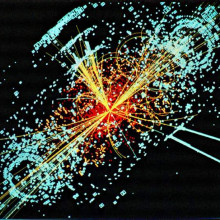
14:25 - What's next for the Higgs?
What's next for the Higgs?
with Tara Shears, Liverpool University
Martha - It's been an exciting year for the Large Hadron Collider, the LHC, CERN's high power particle accelerator in Switzerland. Recently, the facility announced that they have discovered evidence for the Higgs boson, the particle that gives things their mass. Liverpool University Physicist Tara Shears spends part of her time experimenting at the LHC and spoke at the [British Science Association] festival about what the discovery might mean.
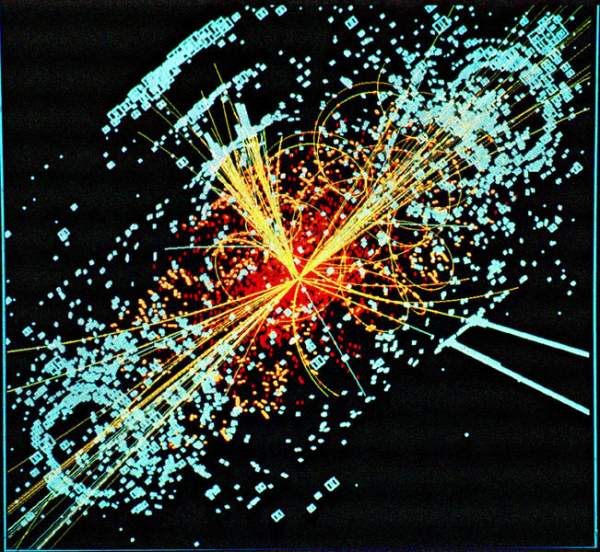 Tara - Well, we've quite definitely found something completely new. We can be sure of that. And I know that the way that physicists are very reticent about claiming exactly what it is that's been discovered is something of a source of amusement for most people. But what's clear is that we've seen something absolutely new in our data and that something is doing the jobs that we think the Higgs is there to do. So, really, I'm pretty sure that it's the Higgs. This is the particle we've been looking for for the past 40 or 50 years since our subject started, and that's what makes it so amazingly exciting to us.
Tara - Well, we've quite definitely found something completely new. We can be sure of that. And I know that the way that physicists are very reticent about claiming exactly what it is that's been discovered is something of a source of amusement for most people. But what's clear is that we've seen something absolutely new in our data and that something is doing the jobs that we think the Higgs is there to do. So, really, I'm pretty sure that it's the Higgs. This is the particle we've been looking for for the past 40 or 50 years since our subject started, and that's what makes it so amazingly exciting to us.
Chris - So, can we all go home now then, shut down CERN, Higgs is found, job done!
Tara - No, not at all! This is just the start of it and I'm not saying that because I enjoy doing my job.
Chris - Although you do have a vested interest! [Laughs...]
Tara - But really, this is the tip of the iceberg. We've seen this discovery. We've seen something new. We're still not sure though exactly what it is. I have to stress that. It could be the Higgs that we've been expecting to see in our current understanding of physics, but it could be something more exotic, and that's really exciting. It could be something that gives us the first clue to some deeper mysteries in the universe that we're also trying to answer.
Chris - So, what actually have you seen, when scientists from CERN are saying, "We have seen evidence of a Higgs-like particle." What actually does that mean?
Tara - What it means is we've combed through trillions, millions and trillions of proton-proton collisions from the collider, looking for specific experimental signatures that are characteristic of what we'd expect the Higgs particle to have. These signatures are rare, but clean and that's the key. So, if we see enough of them then we can be sure we're not looking at some random combination that is just nature being cruel and teasing us that we're seeing a Higgs. We're actually seeing the real deal. We have enough data now to really be confident that we're really seeing something that isn't random fluctuation. I mean, we're seeing something at level of 1 in 10 million, that sort of chance of being a background fluke. So, from that point of view, no. It's real. It's real, believe it.
Chris - People are saying this is definitely some kind of a boson. Is it the Higgs boson? And what do they mean when they make that fairly cautious statement?
Tara - So, the sort of particle we're looking for, a Higgs, is a type of particle called a boson and what that means is that it has a quantum property. It has what we call integer spin. That's what makes a boson a boson and not some other type of particle. But as to whether it's a Higgs boson, well, what we're looking at is to see if it behaves in the way that we expect the Higgs to behave. And what we mean by that is, we're looking to see how it interacts with the other particles, how often it joins up with them, how often it decays to them. What makes the Higgs special is that unlike the other bosons in nature that we know about that convey the forces of radioactivity or electromagnetism, this has in a sense a more fundamental role. It's responsible for giving the fundamental particles we know about mass, but that also has a knock-on effect of making the forces in the universe behave in the way they do. If you didn't have that Higgs there, then the Universe would be completely different. You wouldn't have atoms. You wouldn't have stars. You wouldn't have us. Everything would zip around at the speed of light and wouldn't even coalesce at all. So, it's that level of fundamentalness that we have interest in seeing this particular particle.
Chris - When people talk about you actually seeing the particle, and then, on the other hand, they're talking about a Higgs field - and the Higgs field is a bit like a gravity field, it's why things have mass - what's the difference between the particle and the actual field? How does one relate to the other?
Tara - In brief, because this field - this energy field that's the Higgs field - is invisible to us, the particle is the public face of the field. It's the only part that we can actually see; it accompanies it. What it means at a slightly deeper level is that if you think of space being filled with this sort of jelly-like, Higgs field-like substance, then a Higgs particle that we see corresponds to a ripple in this field, like a sound wave going through a room where the room was full of air. That's a good analogy to have in your head.
Chris - So, these Higgs particles are everywhere and they are creating the field, or giving rise to the field around them and matter interacts with that field, which is why matter has mass.
Tara - Pretty much. The Higgs particles are naturally associated - intimately associated - with this field. You don't get one without the other. But fundamental particles moving through this field get their mass by that interaction with the field. So, by discovering the Higgs particle, we know that the Higgs field is there, and because we know that the Higgs field is there, we know that that's how particles get their mass.
Chris - So, how does the collision actually give rise to a Higgs particle. Is it that the collision in some way changes the field and that means that we can see that signature sign of it being a Higgs particle there, or are we creating a Higgs particle when we do those enormous collisions.
Tara - If you like, when we have a proton-proton collision at the LHC, we're really shaking the field and giving it a sort of big knock on the side, and forcing a Higgs to come out. It's like going back to my analogy of having a sound wave propagating through a room. It's like you've got an enormous drum at one end that you're beating to make these things happen. So, our collisions make the Higgs visible for an instant of time and then we see the debris that the Higgs leaves behind once it decays down.
Chris - So, what are the next steps now that you'll be focusing on at CERN, and what are the big questions now you think you've got the Higgs? What's it going to take to firm this up, where are you going next?
Tara - The very first question we have to answer is what sort of Higgs are we looking at. That's very important and to answer that, we need to look in much greater detail of the way it behaves and compare that behaviour to our theories to see if it's matching up with the Higgs we expect or whether as I said, it can be a more exotic version. But that's just one thing we're trying to answer with the LHC. We're also trying to understand what the nature of dark matter is, what it's made of. We're trying to understand what the nature of anti-matter is and why we just don't have any in the universe anymore.
Chris - And since you mentioned it, just to finish off, do we think that anti-matter interacts with a Higgs particle or is the anti-matter equivalent of a Higgs particle?
Tara - That's an extremely interesting question. Anti-matter has mass; therefore, it must interact with the Higgs to get that mass. But as to whether the Higgs has its own anti-matter counterpart, well, that depends very much on the type of Higgs that we're looking at. It could well, or it could be its own anti-matter counterpart. I mean, it really gets very science fiction-y at this point since we know so little about it, but yes, it's one of the questions we want to know about...
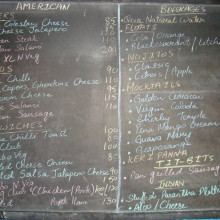
21:35 - Improving our diets with the right kind of information
Improving our diets with the right kind of information
with Julia Allan
Chris - Now we've all been there. It's the end of a very long day. You're tired and hungry, and you know you shouldn't but you're finding the lure of the cake counter impossible to resist. Now scientists think that this sort of willpower failure is responsible for many of us putting on weight. Thankfully, Aberdeen Psychologist Julia Allan has come to the rescue.
 Julia - What we were particularly interested in is why people don't stick to their good dietary intentions. So we know that a lot of health promotion campaigns focus around giving people information, under the assumption that if you give people more information, they'll make a better choice. So, an example would be the 5-a-day campaign. We're telling people, "you should eat 5 a day," we're telling people the benefits of 5 a day, and we're assuming at some level that having that information will make them more likely to eat 5-a-day. But, unfortunately, what we know and what's now very well established is that information on its own isn't sufficient to produce behaviour change. So, we've been developing little signs to be displayed at food order points in coffee shops, and the signs show the entire range of snack foods that are available, ordered from on the left hand side the least calorific, up to the most calorific on the right hand side. And they have a little message at the top saying, "If you want to eat fewer calories today then choose one of the snacks on the left." And so, we're directing people's attention away from the higher calorie snacks and towards the lower calorie ones.
Julia - What we were particularly interested in is why people don't stick to their good dietary intentions. So we know that a lot of health promotion campaigns focus around giving people information, under the assumption that if you give people more information, they'll make a better choice. So, an example would be the 5-a-day campaign. We're telling people, "you should eat 5 a day," we're telling people the benefits of 5 a day, and we're assuming at some level that having that information will make them more likely to eat 5-a-day. But, unfortunately, what we know and what's now very well established is that information on its own isn't sufficient to produce behaviour change. So, we've been developing little signs to be displayed at food order points in coffee shops, and the signs show the entire range of snack foods that are available, ordered from on the left hand side the least calorific, up to the most calorific on the right hand side. And they have a little message at the top saying, "If you want to eat fewer calories today then choose one of the snacks on the left." And so, we're directing people's attention away from the higher calorie snacks and towards the lower calorie ones.
Chris - That would be sort of Mars bar over on the right, banana on the left; and so, you're saying to people, "You can have one of those or one of those. And if you want fewer calories, go to the left hand end of the scale."
Julia - Yes and we're trying to capitalise on people's natural slight bias for the left side of visual space, so people will naturally pay slightly more attention to things presented on the left than the right.
Chris - Does it work?
Julia - When we've been testing these, we randomly allocate coffee shops in blocks of a week. So, we'll have the sign randomly displayed for 6 weeks out of a 12-week period and then we'll record sales figures throughout the entire period and compare sales of all the different items when the signs are there and when the signs are not. And what we're seeing is that, when the signs are present, we see a measurable reduction in sales of all of the higher calorie items and about half of the lower calorie items increase their sales. So people do seem to be switching down and making different dietary decisions.
Chris - So, it clearly works because people were changing their behaviour. How did it go down with the store owners though, because if they're not selling a Mars bar and they're selling an apple instead, that's okay; but if they sell no Mars bar and someone doesn't buy something instead, they're going to lose money...
Julia - I think that's always a tricky issue and we did have a lot of negotiations at the start of this project about whether or not we could trial an intervention that ultimately might negatively impact on their sales. But I think there's been a real shift in the culture of organisations towards promoting healthy eating, so many of these places now have a healthy living award, and so on. So, they were actually fairly open to the idea. The beauty of this intervention is, more typically, people were switching one purchase for another. So, some people certainly didn't buy things, but a more typical pattern was to see how many calories were in - for example a latte - and to choose to have a black coffee instead.
Chris - Did you quiz any customers who had interacted with the sign and then bought something so that you could see how they reacted to it? What was their perspective?
Julia - Yes, we did. We had about 130 customers who agreed to come and be interviewed after the study, and we went away and we measured their executive function [willpower], and we found that the people with the weakest executive function were much more likely than others to have changed their behaviour in response to the sign. People were buying fewer calories than they would typically buy during a visit to that coffee shop. And when we asked them how they'd use the sign, most had used it in the way that we'd expected or had not used it at all. They had either not noticed it or not felt it was relevant. But we did have a sizeable minority who used the sign in a way where we hadn't anticipated. They would see, for example, that there were 300 calories in their milky coffee and decide that they could have 3 "Milky Ways" [chocolate bars] instead of that - and that's exactly what they did!
Chris - So, they were buying stuff which was actually not necessarily a healthier option, but they knew they could get away with this many bad things in place of one coffee, so they were trading one evil for another...
Julia - Yes, there was a sizeable minority that did exactly that and I have to say, anecdotally, they were all women. So, they've made the decision based on, it seemed to us that, "Oh well, I would've had that anyway and look, I could have 3 small bars of chocolate for the cost of that coffee," which was not really what we intend. So, it's a work in progress.
Chris - Will this translate to other things? You've done it with food. What about fizzy drinks or maybe other things? Could it work with cigarettes? Could you have nicotine and tar levels or something on a similar sort of scale and persuade people to switch to a less unhealthy cigarette?
Julia - Well, we've done it initially in snack foods and we've also done it in drinks because we know that the kind of premium coffee industry is also a big source of calories. So I think a lot of people don't realise when they're in Starbucks that there's up to a 500-calorie difference between a full fat hot chocolate and a black coffee. And so, we've got the same effect in drinks, but there's a general principle, so in theory it should apply to any behaviour that requires willpower or self-regulation.
Chris - I'm going to have to knock the lattes on the head. That was Julia Allan. And the results of her study show that people tended to eat, on average, 66 fewer calories as a result of her intervention and that is sufficient, other studies have shown, to make a meaningful dent in a person's likelihood of gaining weight.

27:28 - Can we change our diets to help us lose weight?
Can we change our diets to help us lose weight?
with Alexandra Johnstone, Aberdeen University
Ben - Researchers in Aberdeen are now trying to develop new types of diet food that help you cut calories by making you feel fuller for longer. Dr. Alexandra Johnstone...
 Alexandra - Well, I'm interested in appetite control and that mostly is applied within the context of weight loss because one of the main reasons why we fail to lose weight is because we feel hungry. So, if we can develop dietary strategies that help control appetite then we'll help people lose weight.
Alexandra - Well, I'm interested in appetite control and that mostly is applied within the context of weight loss because one of the main reasons why we fail to lose weight is because we feel hungry. So, if we can develop dietary strategies that help control appetite then we'll help people lose weight.
Ben - So, regardless of the content of the diet itself, the problem is that we keep eating and we eat more than we should.
Alexandra - Yes, we have a huge obesity epidemic in the UK and it will be nice to think if we would have preventative strategies to stop our waistlines expanding further, but we also need therapy. So, it's not just drug therapy. It's not just bariatric surgery. We need other lifestyle approaches to help people maintain and manage their body weight.
Ben - So, what is it that stops our appetite? How do we actually feel full? Is it more than just literally filling up the bag that is our stomach?
Alexandra - Well, the volume of the food of course is important and that's governed from the stomach, but the work that I'm interested in is the role of protein in influencing how full we feel. That's when I use the word 'satiety'. So, what I'm interested in is protein induced satiety, so what is it about protein, the macro-nutrient protein that helps fill us up and makes us feel fuller for an extended period of time? Just to remind you, our protein sources are primarily from meat, whether red meat or fish, poultry, but can also be non-meat sources from cereals, dairy products, and peas, beans, and pulses.
Ben - Protein of course is a huge over action termed for anything that's made up a long chain of amino acids. So, it really could be any source of protein or are we looking at specific proteins that we think have an effect?
Alexandra - The work that I've done would tend to indicate that vegetable and meat source protein are both effective at influencing appetite during weigh loss. So that's encouraging. So, it gives us insight to a variety of different sources that we can use to try influence how full we feel.
Ben - So, what do we think is actually happening when we eat protein compared to let's say, a high-fat diet or a high-carbohydrate diet?
Alexandra - That's a good question. I'm not sure I have the answer unfortunately, but some of the mechanisms that will be involved is when protein reaches the stomach and then is digested and partly absorbed, then that will influence the gut hormones that are released from the stomach and they are fed directly into the brain via the vagus nerve. So, we know that that's potentially one of the mechanisms. Other mechanisms, as you said is the amino acid structure of the proteins and that the change and influx of amino acid concentration in the blood would potentially also influence the brain. I keep mentioning the brain because it's our traditional view that the brain is very important in regulating and sensing changes in energy, and is thought to be our traditional hunger and fullness centre.
Ben - So, what are we going to do now to investigate this further, if we still need to shed some light on the physiological mechanism? What can we start doing?
Alexandra - Today, we've been speaking about a work that's funded by the EU. It's a very large multi-million project across 9 European countries and 18 academic and food industry partners. So, it's pulling together all that expertise to develop new products that can be tried and tested in humans to help control appetite. And skipping forward a few years, within the SATIN grant, or satiety innovation is the name of the grant, we'll be looking at how diet can influence appetite with a view to helping people lose weight.
Ben - So, lots of research is done telling us what foods we should and shouldn't eat, and the right sort of balance, and how much red meat we're supposed to eat per day, and so on. You're taking that a step further in looking at developing new foods that have the right protein mix or the right components to actually make us feel fuller.
Alexandra - That's exactly right, yes. We will be testing it in a whole diet, it's going to be done in Denmark, so we have volunteers where they're provided all of their food items for an extended period of time - say, 6 months. So, we'll be able to look at changes in body weight over that prolonged period of time. So it's quite a challenging project.
Ben - The other way to look at this though is that problem is responsible for telling people that they're full, and we know some people in conditions where they might be ill, need to actually eat more and they need to overcome their own feeling of fullness in order to take on more calories. Can we do essentially the reverse of what we're talking about and engineer foods so that people can take more on before they feel satisfied?
Alexandra - Yeah, that's a very good point to make in that although we're dealing with the obesity epidemic, there is a small proportion in the UK, nonetheless, extremely important and that's the elderly undernourished. Protein probably does have a role to play and certainly, some of my work involved in other EU funded projects, looking at the role of protein in a liquid form and how that influences appetite and food intake. So, in that sense, it's used as a between meal kind of supplement in order to give them essential nutrients and vitamins, and minerals in a drink form that can help potentially improve quality of life.

33:16 - A new way to learn to read can help children struggling with the basics
A new way to learn to read can help children struggling with the basics
with Art Glenburg, Arizona State University
Martha - One reason why children struggle to learn to read is that they become so distracted with trying to get the sounds of the words right that they lose track of how the actual word relates to the story they're trying to read. This also makes it hard to remember that word in the future because its context has been lost. To combat this, Art Glenberg from the Arizona State University has developed a teaching system whereby the child interacts with the story by moving objects and people referred to in the story around on a computer. They find that the developing brain ties the word and the action or meaning together, and makes them more memorable. The result is up to 50% better performance in comprehension and word recall tasks.
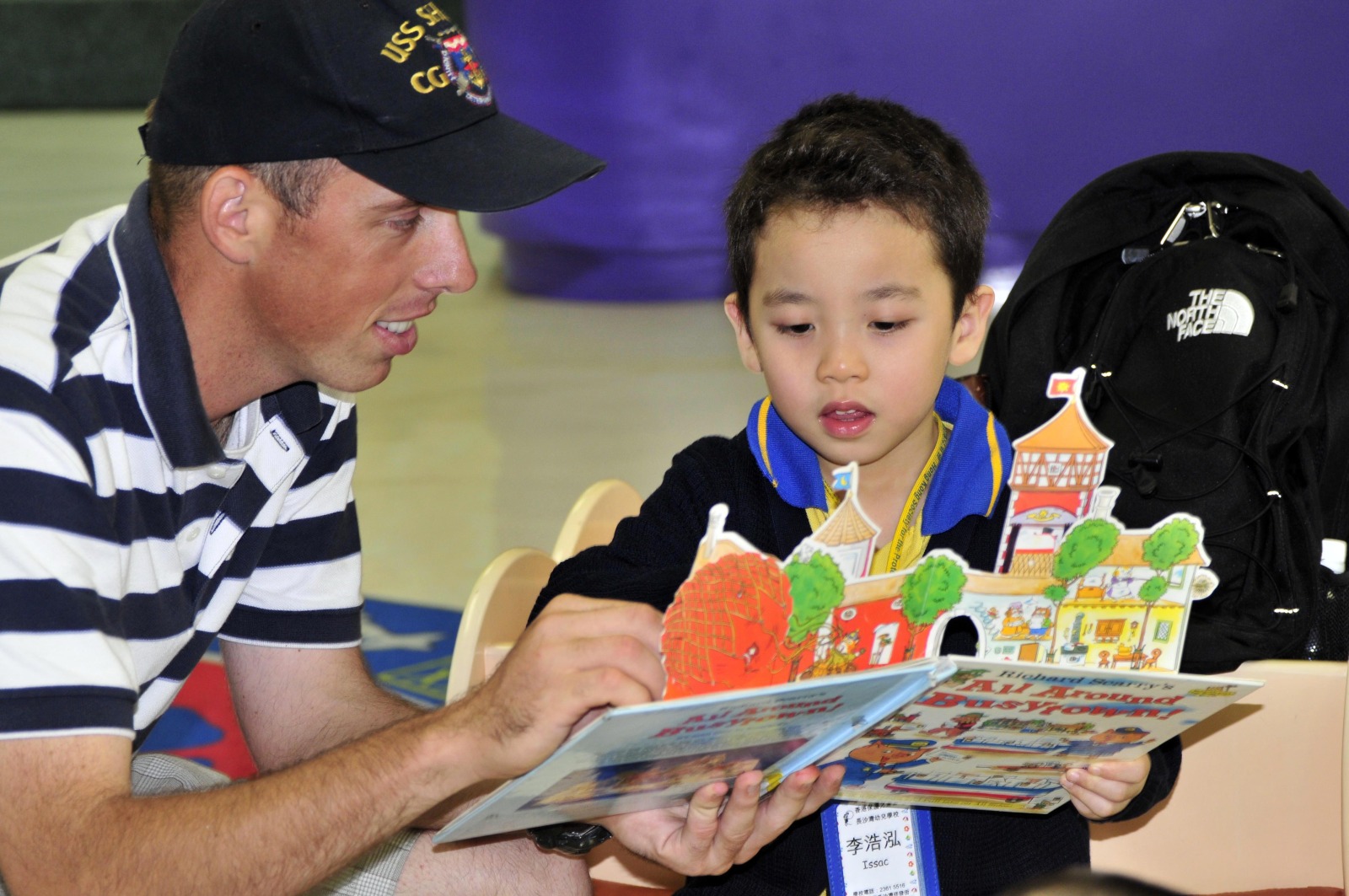 Art - What I'm about to say doesn't apply to all children, but to many children. And that is that they haven't learned how to make the link between the written word and their experiences. So, when they come to a word like 'beach', some children may not hook that up with their own experiences at the beach and when they don't do that, all is lost. They don't get any meaning from the text that they're reading.
Art - What I'm about to say doesn't apply to all children, but to many children. And that is that they haven't learned how to make the link between the written word and their experiences. So, when they come to a word like 'beach', some children may not hook that up with their own experiences at the beach and when they don't do that, all is lost. They don't get any meaning from the text that they're reading.
Chris - So they're sounding it out and saying 'beach' but that doesn't to them, in their mind, mean waves, sand, sand castles, running around in the sunshine.
Art - Exactly and you might ask further, why is that? They've said the word. And I think the reason is that when the word is said in the context of reading, it's often pronounced disfluently and it doesn't have the context around that it would in a normal conversation with one's parents or with one's friends about running around on the beach and playing ball on the beach. When the children are reading and having difficulty reading, each word that's pronounced individually and disfluently. And so, those words just don't make the contact that's with the experiences that's necessary.
Chris - Such as because the child is concentrating so intently on getting the word out, that actually the meaning is being lost.
Art - I think that's part of it. It does require a lot of concentration to get the word out, but another reason why the meaning is lost is because it's taking so long for the child to get the word out when saying, "Beach" that the word just before has been forgotten, and certainly, the word, 3 words ago, has been forgotten. So, it's very difficult for the child to integrate the meanings.
Chris - So, what do you think we can do about it?
Art - There are a number of attempts to help children read better. One is to have them practice so they develop fluency and I think that's certainly a good idea. But what I've done pushing is this program called Moved by Reading where we help children develop the links between reading and their experiences. We do it in a very simple, child-friendly manner, by having the child read simple text with images of the characters in the text up on the computer screen. And then as the child reads a sentence, for example, a sentence about activities on a farm, the child might read, 'Ben drives the tractor to the barn." What the child will do is to move the image of Ben the farmer into the image of the tractor and then move the two of them toward the image of the barn. And what we find is that this sort of physical manipulation has a number of benefits. First, it helps the children remember the story much better than they would otherwise, often twice as much. It lets them answer inference questions from the story much more accurately. The major benefit though is that after children have been engaged in physical manipulation, we can then tell them to do it in their imagination. When they're reading, they should imagine the characters are moving, and it seems like after children get the idea from physical manipulation, they're able to do it on their own.
Chris - And this is something that we do as adults intuitively. We've kind of learned just naturally to do that. So, when we read something, we're seeing pictures in our own mind to decode what's going on, and we don't even notice we're doing it. You're actually here training that development in a child, but getting it at an earlier age.
Art - I think that we, as adults, don't so much do it intuitively, but we have learned how to do it by virtue of our educations and those of us who have been lucky enough to have had a good education or good parents who will read to us and point to pictures in a picture book, that sort of activity has encouraged our ability to do the sort of imagination that then allows us to get the meaning from the text that we're reading. Many adults will claim that they don't have any images while they're reading and that claim may be perfectly true in the sense of not having images that are consciously available. But when you put those same people into an MRI machine or into an MEG machine, what you can show is that those areas of the brain that are used in generating those sorts of visual experiences are active when they're reading. But the activation for skilled readers is so fleeting that there isn't much conscious experience.
Chris - What's the difference though, between what you're doing and the general picture book because the pictures draw the child in? Is it just the physical engagement of having to interact with the picture and remember the story that means the child is more engaged than they would be with just a sterile picture?
Art - I think that's part of it certainly, the engagement. Another part is that when a child is reading in a picture book, the relation between the words and the pictures isn't systematic. So, sometimes the child will look at the picture, sometimes the child won't. They may be looking at the wrong picture. Another part of it that I think is very important though is that by manipulating the pictures, it forces the child to take into account the syntax of the sentence - how the words go together, the 'who does what to whom,' because the child must generate those appropriate actions on the pictures to go on to the next sentence. When it's just a static picture book, there is nothing enforcing the need to consider the syntax. The child could see word dog and look at the dog. They can see the word cat, then look at the cat and never appreciate the relation between the dog and the cat, like the dog is chasing the cat or whatever.
Martha - Art Glennberg from the Arizona State University.
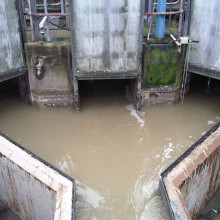
40:23 - Chemicals in sewage sludge cause physiological changes in sheep
Chemicals in sewage sludge cause physiological changes in sheep
with Stewart Rhind, James Hutton Institute
Chris - Industry has revolutionised the way that we live. In the developed world we enjoy high quality lifestyles, healthcare breakthroughs, and a range of gadgets and devices that make life cheap and easy. This ranges from plastic baby bottles to printed circuit boards, and even non-stick frying pans. But the result is that we're all being exposed to low-levels of mixtures of chemicals that, together, might be having serious impacts upon our health. Sheep exposed naturally to these same substances are showing signs of changes to their fertility, reproductive organs, brains, and bones. Aberdeen Scientist, Stuart Rhind...
Stuart - We're investigating the potential effects of environmental chemicals, most of which are man-made chemicals, collectively referred to as Endocrine Disrupting Compounds, EDCs. Now, what that means is multiple chemicals coming from many, many different sources, which have one thing in common, they interfere with the normal actions of physiological systems in animals.
Chris - How?
Stuart - Well, their actions can probably be at the gene level, affecting gene expression, or they can interfere with enzyme systems in cells. We see changes in cellular structures. We see changes in organ structures. We see changes in animal behaviour, the incidence of diseases, etc. It comes in many, many different forms because there are many chemicals acting in many different ways.
Chris - And what are the consequences of those actions? Do we know exactly how they affect living systems and who's vulnerable? Is it just humans?
Stuart - Well, the short answer is that, no, we don't know. But what this work that we've been doing is beginning to show is that the actions of multiple chemicals together, each of them at levels far too low to be considered in any way harmful, may have consequences for the functioning of many different organs and for animal health and well-being, particularly for reproduction. Now, when you ask "which animals," well, the short answer is, all animals. And when I say all, I don't just mean mammals. I mean, all animals, all the way from bacteria, through all sorts of worms and molluscs, all the way up to humans.
Chris - Gosh! So pretty comprehensive. And, of course, if you fiddle with one bit of the ecosystem, it will have knock-on effects.
Stuart - That's right. We're talking about extremely complex systems here. Not only are we talking about potentially up to 100,000 chemicals acting on probably, dozens of different systems. We're talking about different species responding in different ways. But the overall effect is that we might be upsetting ecosystems on which humans depend for their survival. I mean, to take a simple example, if as I said, we could be perturbing populations of bacteria and soil, also, populations of many other organisms such as earthworms, which are fundamental to the processing of nutrients, which is then used by our crop plants. Now, if, by introducing these chemicals to the soil in increased amounts, we start to perturb those populations, we start to change the whole ecosystem, perhaps reducing the population of one species and increasing that with another, we may upset these processes. If we upset these processes, perhaps we could be compromising our crop production, with all the consequences of that for an increasing human population.
Chris - Difficult to study and very difficult to make predictions, a bit like Neils Bohr said, "predictions are always difficult to make, especially about the future." So, how are trying to get a handle on what the impacts might be?
Stuart - When we started this work, in 1997, I was charged with investigating endocrine disrupting compounds. My first problem was that these chemicals are known to be present in very, very low levels. So in order to study them, I wanted to find a way of increasing animal exposure, but not in a big way. Not like it's done in the lab where you take one chemical and you maybe go from very low levels up to what would be considered pharmacological levels, the kind of levels you'd take with a drug to cure a disease; huge amounts. I wanted to get away from that, I wanted a subtle change, something that was real world if you like. So I came up with the concept of using sewage sludge. All our drains, from our domestic and industrial facilities, all ultimately end up in our sewage system which goes into a sewage farm where it is processed. Two products come out, one is "pure" water, and the other is solid waste. But because of our human lifestyle, it contains all the products that we use. It contains our medicines, illegal drugs, things from plastics, from cleaning agents. So, we're using this sludge as a tool. In many parts of the world, it is recycled to land as fertiliser. By putting it onto pasture, something that's done routinely, we can study the effects of introducing these extra chemicals on animals exposed to that treated pasture.
Chris - It's grazing animals.
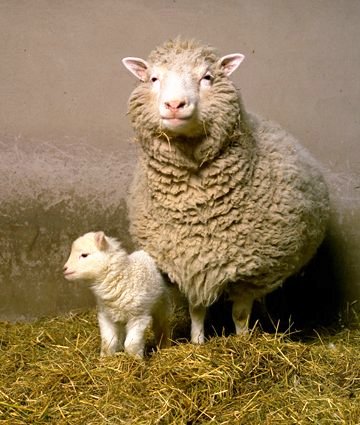 Stuart - This is sheep in this case. So, sheep are our experimental model and we're applying sludge to the pasture as a fertiliser.
Stuart - This is sheep in this case. So, sheep are our experimental model and we're applying sludge to the pasture as a fertiliser.
Chris - And what are you measuring about the sheep?
Stuart - First of all, we're measuring the concentrations of selected endocrine disruptors in the tissues of sheep to get an idea of how much of these chemicals are actually present. Now there is a second part and that is, what are the consequences for the function of various organs, and that's where a number of collaborators in many different countries come in. And they've been able to demonstrate subtle changes in multiple organs.
Chris - What are you comparing the sheep grazing the sewage treated grass with because obviously it's one thing to do an observation, it's another to say, well, we've got cause and effect here?
Stuart - We have a control group of animals, that is, an untreated group. They are treated in exactly the same way as those exposed to the sewage sludge except that instead of using sewage sludge as fertilizer we use and inorganic, man-made fertilizer that we know contains absolutely minimal levels of these pollutants. We can't guarantee that the effects we see are a function of the chemicals, these endocrine disruptors, but our results taken in conjunction with what is known in the literature, we believe it to be the most likely explanation.
Chris - That being the case, what is the implication for us humans?
Stuart - In my personal opinion, if things went to their logical extreme, we could threaten the viability of ecosystems on which we depend and we could ultimately threaten our own fertility as a species. We already have evidence of declining sperm count, increased incidence of requirements for IVF (in-vitro fertilisation), particularly in certain countries. I think we do need to understand possible consequences for the health of the ecosystems on which we depend for our own survival.
Chris - Stuart Rhind, from Aberdeen University.
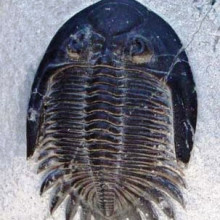
47:54 - What colour were fossilised insects?
What colour were fossilised insects?
with Maria McNamara, University of Bristol and Yale University
Ben - Now that's nearly all we have in our roundup of the British Science Festival that came from Aberdeen this year, but one thing that really caught my eye was the science of brightly-coloured fossilised insects. When we see a reconstruction of a prehistoric creature, perhaps in a book or on TV, the creator has usually made it very colourful; but how do we know what colour it should be? Historically, we haven't, and so the creator just made it up. But Bristol scientist Maria McNamara has made a breakthrough that means she can now work out the colours of ancient fossilised insect remains.
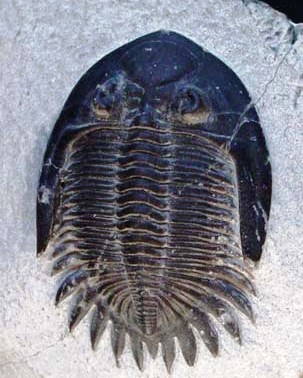 Maria - Most of the fossil record has no colour preserved at all and 99% of fossils are bones, shells, teeth; and so preserving soft tissues that have colour is very, very rare. But every so often, if you get the right sort of circumstances, coloured tissues like skin and feathers, and insect cuticles, do get preserved.
Maria - Most of the fossil record has no colour preserved at all and 99% of fossils are bones, shells, teeth; and so preserving soft tissues that have colour is very, very rare. But every so often, if you get the right sort of circumstances, coloured tissues like skin and feathers, and insect cuticles, do get preserved.
Chris - There's two ways that things can make colour isn't there because there's the kind of colour as in, 'I dye my clothes in a certain colour', but then there's another kind of colour, which is the structure of the surface.
Maria - Yeah, exactly. So, the first type of colour you were talking about is pigmentary colours and pigments are chemicals. These are the colours that we see in our clothes, in our hair, in our skin, and so on; and structural colours; they're produced via an entirely physical process, not involving chemicals at all. So, what happens is, light comes in to a tissue and is scattered in a coherent way by tiny ordered nanostructures and the light that is reflected, it's reflected using constructive interference so that all the light waves are in phase. And this really enhances your visual signals. So it bumps up your colour, it makes it more intense and brighter. So, these structural colours, although we may not be as familiar with them as pigments, they actually give us the brightest colours in nature.
Chris - But when they fossilise, are you looking for those tiny nanostructures then that would give that colour, were they still in existence?
Maria - Exactly, yeah. So, to find fossilised examples of these structural colours, the first clue is that you find a fossil insect that is blue or green rather than the standard black or brown. And then, when you find one of these coloured fossil insects, what you then do is use very powerful microscopes, electron microscopes, to scan the tissue in detail to look for these nanostructures. And yes, you know, they are preserved, but they're not preserved exactly as they were in life and that's the key to the whole story.
Chris - Also, the things you're looking at were, by definition, preserved millions of years ago. Do you look at modern-day insects and say, "Well, we know that sort of pattern of nanostructures make that sort of colour, so we'll deduce that in our fossil, it must've been that sort of colour?"
Maria - You could use that approach, but the problem is, we don't have enough fossils for which we have modern analogues of the extant species. Over millions of years, species diverge. So, with the fossils, what we found was when we looked at the preserved nanostructures in the tissues, they were giving us a false reading. They were telling us that the original colours weren't preserved. So, in order to actually find the missing piece of the puzzle, we decided to do fossilisation experiments. We made fossils in the lab basically.
Chris - Must've been a long experiment! It takes millions of years!
Maria - No, actually, our experiments took 24 hours each. Basically, what you do is you bump up the temperature and pressure. You use conditions that you wouldn't get in nature, just to speed up the whole process because, you know, a typical research project lasts 2 or 3 years. You don't want to spend the whole time gathering your data...
Chris - So, how do you know then that what you have produced, by altering the conditions, is a faithful reflection (if you excuse the pun) on what would've occurred in that original insect millions of years ago?
Maria - Well, we know this two ways. People have done these kinds of burial experiments. They're called maturation experiments and many, many times before on fossil tissues, and compared the results with what you actually see in fossils, in terms of what the chemistry, and preservation of physical structure. So we know these experiments are a very good analogue for what we see in the fossil record. And with our own results, we were actually able to very closely replicate in the experiments what we had in the fossils. It all matches up perfectly. We produced a very nice progressive colour change as we increase temperature and pressure, and we were able to explain why this colour change happens. So, colours change during fossilisation because: number one, the thickness of the layers in the nanostructure changes during the fossilisation process. But, number two: the chemistry of the tissue changes as well. This is why colours change. But we did have one very unexpected result and that was, at the end of our experiments, we decided to just really ramp up the conditions. [We asked] "how far did we have to go until we manage to turn our structurally-coloured insects black? What we have to do to just obliterate colour completely because this is what we see in the bugs in the fossil record." And when we did this, eventually, we managed to generate black insects, which are basically what most of the fossil record looks like. Just out of curiosity, we said, "Let's just look at the structure in these black fossil insects as well." And when we did that, we still found traces of the colour-producing structure. So this means that we can now go to the bulk of the fossil record, looking at all of those black fossil insects and, actually, there's a good chance that we'll find evidence of colour there. So we'll be able to reconstruct original colours and colour patterns for a whole host of different insects. And so this means that we have the potential to start reconstructing communication strategies in ecosystems and actually tracking how communication strategies, and behaviours, have changed over geological time. And behaviour is, of course, one of the most elusive aspects of fossil organisms. So we think we're onto a bit of a winner with this one...
Ben - Maria McNamara from the University of Bristol.

Stronger lasers with mirrors?
Hannah - This week, we probe with the powers of reflection...
Jay - My name is Jay Shoal and I'm from Greenhithe in Kent. My question for the Naked Scientists is whether you can make an infinitely powerful laser, just using mirrors. Thank you.
Hannah - So, first up, how does a laser actually work? If you give an atom energy, it can give that energy back out as a photon of light in two different ways. Normally, it does it spontaneously in a random direction, but if it’s hit by another photon of light of exactly the same energy, it will release its energy as a second photon which is identical to the first photon and in the same direction. So, amplifying the light signal. That means that in a medium full of excited atoms one photon can get amplified into millions of photons all going in the same direction. Dr. Martin Austwick from University College London explains how the use of mirrors further amplifies this signal in lasers.
Martin - Now a way that you can make the amplification even more powerful is by having parallel mirrors. So, the light passes through the medium and gets amplified, bounces off the mirror on the right hand side and then passes all the way down to the left hand side and get amplified and then repeats and bounces backwards and forwards, and as it’s passing through the medium, it gets more and more powerful.
Hannah - And so, given that, can we simply line up more and more parallel mirrors to make an all-powerful laser? Apparently, not.
Martin - You need one of the mirrors to be partially reflective. It needs to have a little bit of light leakage out, otherwise light will be permanently trapped inside that cavity and you’ll never get a shining out of the laser itself. So, that means some energy is lost on each cycle. So it’s not perfectly reflective. Each bounce of that light losses a little bit of energy.
Hannah - In fact, both mirrors are not perfect. They will absorb some energy rather than reflecting all of it. And this limits the power of the laser beam output. And most laser beam powers are limited, since if you don’t put energy into the laser fast enough to excite the atoms in the cavity medium, they can start absorbing light rather than amplifying it. Back to Martin…
Martin - The way that lasers work is that they have to have the material which is in some sort of excited state. When a laser amplifies itself, it takes energy out of the medium. So it takes excited molecules or atoms in it. Those atoms and molecules lose energy and they go to a lower energy state. So, at some point, when you’ve got a very, very high degree of amplification, it’s constantly de-exciting molecules and eventually, you’ll end up in a situation where there aren’t any more molecules to de-excite. So, there's a limit to how powerful a laser beam can be.
Hannah - But John Tish, Professor of Laser Physics at Imperial College London adds that there is a different way that you can use mirrors to increase laser power.
John - While an individual laser will have its definite power limit, mirrors can actually be used to combine the beams from multiple lasers to boost the output. This combining of multiple laser beams is the approach taken by the National Ignition Facility or NIF for short which is in Livermore, California where 192 pulse laser beams are combined using loads of mirrors to deliver huge amounts of laser energy to a hydrogen fuel target, with the hope of achieving fusion. Just a few weeks ago, NIF fired a record 1.85 mega Joules onto a target, corresponding to a staggering peak laser power of 500 trillion Watts which is about 1,000 times more than the total US power consumption.
Hannah - So Jay, yes. Very high power laser beams are possible and it can all be done with mirrors, but only by using mirrors to merge different individual laser beams. We next reflect on the beginnings of life on earth.
Barry - Hi, this is Barry Wary calling from Richmond, Virginia. I was wondering: if earth is such a great place to live, why to our knowledge has life only begun once on this planet? Why don’t we see new life beginning here every day? And why do we believe that there is only one tree of life?






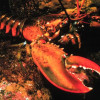

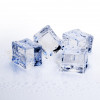

Comments
Add a comment